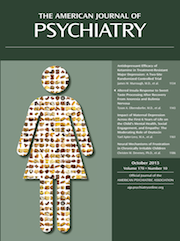Social Cognition in Schizophrenia: From Evidence to Treatment
The premise of this book is that people with schizophrenia have deficits in real-life functioning (i.e., maintaining meaningful relationships, keeping productive jobs, and managing their lives independently) and that these aspects are core to recovery-oriented models of treatment. However, positioning social cognition at the core of the factors underlying such functional problems is more slippery ground. Both the definition of social cognition and its relationship with outcome are still controversial. Many different concepts of social cognition are used in the book, but a unifying conceptual framework of social cognition, its boundaries and elements, is lacking, even within the field of social psychology. Recognition, understanding, and processing of emotional information are common to the majority of the definitions. Interpersonal information decoding is incorporated sometimes, and most of the recent definitions incorporate the capacity to effectively apply that knowledge to social interactions. Whether social cognition is a cognitive capacity, a metacognitive capacity (similar to executive functions), or a framework or cognitive bias that colors other cognitive functions is unresolved.
The book is an excellent review of the contributions of social psychology and schizophrenia research to the importance of social cognition in schizophrenia, with very detailed reviews of the available evidence. Social psychology provides substantial insight into how normal adults make correct and incorrect judgments (biases, errors, and mistakes) and the development of mentalizing capacities in children. Concepts of social cognition are also proposed to be useful for understanding psychological processes underlying symptoms of psychotic disorders. Clearly, schizophrenia disrupts mentalizing abilities, but there is much inconsistency in the nature and extent of the disruption. Evidence supports social cognition problems as part of the psychotic state; less evidence supports this as a trait along the disease course. In chapter 4, specific components of social brain function that can be relevant to schizophrenia are extracted (i.e., self- versus other-oriented information, intentional versus incidental emotion regulation, and tendency versus capacity to engage in such processes). Their distinct neural correlates are also reviewed. A complex but comprehensive view is given of the different brain regions elicited when becoming self-aware, or when interpreting others’ simple and complex mental states, depending on the similarity or dissimilarity of the other to oneself. Social psychology has clearly contributed greatly to defining distinct elements of social cognition and studying their neurobiological basis.
Where the book makes a leap is to propose that delusions are on a continuum with “other tenaciously held beliefs” (p. 215). The nosology of psychotic disorders long ago distinguished paranoid development and the more pathological schizophrenia process. Most psychiatric diagnoses of schizophrenia are based on Jaspers’ concept of primary delusion, a severe disruption in the form of thinking in which particular content may not be particularly relevant to the pathological process. The authors do not make a sufficient attempt to integrate their view of delusions with this classical and widely accepted concept of the phenomenology of delusions in schizophrenia.
Despite these caveats, the book’s detailed state-of-the-art account of converging research in schizophrenia and social cognition is of great value for researchers. New evidence for neural abnormalities in social cognitive brain regions in people with schizophrenia and the recent incorporation of social cognition insights extend the strategy for rehabilitation of patients with schizophrenia beyond older symptomatic and neurocognitive approaches. Some of these therapeutic strategies are immediately useful therapeutic tools for patients with schizophrenia. For example, because what is going on in others’ minds is fundamentally intangible to us, it is more useful not to attempt to change cognitive processing with the target of improving social cognition, but rather to work on tolerance of ambivalence and nurturing more positive global emotional impressions.



